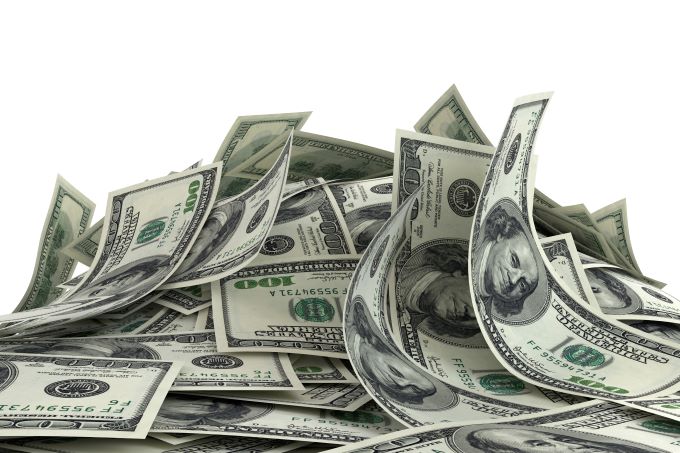 Last week, the US dollar gained 0.66 percent against a bundle of its main competitors, gaining ground for the second consecutive week and closing at the 93.34 level.
Last week, the US dollar gained 0.66 percent against a bundle of its main competitors, gaining ground for the second consecutive week and closing at the 93.34 level.
So far this month, the greenback has been recovering from the previous months' losses, gaining 1.22 percent. In August, the dollar lost 1.29 percent, falling for the fourth consecutive month.
Many attribute this recovery to the fact that traders are now rushing towards safe assets given the late performance of US stocks. Last week the S&P 500 lost ground for the second consecutive week, dropping 2.51 percent and closing Friday's session at the 93.27 level. In the same way, the Nasdaq 100 dropped 4.60 percent, falling also for the second consecutive week.
Moreover, it seems that taking into account the recently published data, the United States economic recovery may be stalling. On Thursday, the Bureau of Labor Statistics published the producer Producer Price Index which in yearly terms was at -0.2 percent in August, after being at -0.4 percent in the previous month. In monthly terms, it stood at 0.3 percent, after being at 0.6 percent in the previous month. Excluding food and energy, it was at 0.6 percent in yearly terms, after being at 0.3 percent in the previous month, and at 0.4 percent in monthly terms, after being at 0.5 percent in July.
The US Department of Labor published the jobless claims data, remaining unchanged at 884,000 and way over the analysts' expectations, who foresaw it to be at 846,000. This means that the number of Americans who applied for unemployment benefits rose for the fourth consecutive week.
In July, job openings rose to 6.6 million, still below the February figure which stood at 7 million. The job openings rate went up to 4.5 percent from 4.2 percent, while the number of people giving up their jobs voluntarily climbed to 2.9 million.
On Friday, markets learned that the consumer price index stood at 1.3 percent in August (year-to-year), increasing from the previous month's figure which stood at 1 percent, and over the analysts' expectations who foresaw it to be at 1.2 percent. In monthly terms, the figure stood at 0.4 percent in August, below the previous month figure which was at 0.6 percent, and over the analysts' expectations who foresaw it to be at 0.3 percent.
Excluding food and energy, the consumer price index stood at 0.4 percent in monthly terms, after being at 0.6 percent in the previous month and over the analysts' expectations who foresaw it to be at 0.2 percent. In yearly terms, the index stood at 1.7 percent in August, after being at 1.6 percent in the previous month and over the analysts' expectations, who foresaw it to remain unchanged.
One factor that threatens the US recovery is the fact that it seems unlikely that the US governing parties will agree over additional stimulus measures before the November elections. The negotiations between the democrat and republican parties are now essentially stalled, as the Senate failed to advance a Republican bill given the democratic party opposition.
The Republican plan was offering $300 per week in federal unemployment insurance until the end of December, half of what the democrat party proposed, as well as $105 billion in education funds and giving businesses the chance to apply for a second loan under the paycheck protection program.
